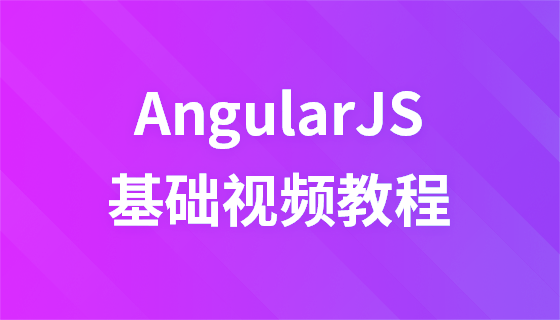本篇文章带大家了解一下angular中的HttpClientModule模块,介绍一下请求方法、请求参数、响应内容、拦截器、Angular Proxy等相关知识,希望对大家有所帮助!

该模块用于发送 Http 请求,用于发送请求的方法都返回 Observable 对象。【相关教程推荐:《angular教程》】
1)、引入 HttpClientModule 模块
// app.module.ts
import { httpClientModule } from '@angular/common/http';
imports: [
httpClientModule
]2)、注入 HttpClient 服务实例对象,用于发送请求
// app.component.ts
import { HttpClient } from '@angular/common/http';
export class AppComponent {
constructor(private http: HttpClient) {}
}3)、发送请求
import { HttpClient } from "@angular/common/http"
export class AppComponent implements OnInit {
constructor(private http: HttpClient) {}
ngOnInit() {
this.getUsers().subscribe(console.log)
}
getUsers() {
return this.http.get("https://jsonplaceholder.typicode.com/users")
}
}this.http.get(url [, options]); this.http.post(url, data [, options]); this.http.delete(url [, options]); this.http.put(url, data [, options]);
this.http.get<Post[]>('/getAllPosts') .subscribe(response => console.log(response))
1、HttpParams 类
export declare class HttpParams {
constructor(options?: HttpParamsOptions);
has(param: string): boolean;
get(param: string): string | null;
getAll(param: string): string[] | null;
keys(): string[];
append(param: string, value: string): HttpParams;
set(param: string, value: string): HttpParams;
delete(param: string, value?: string): HttpParams;
toString(): string;
}2、HttpParamsOptions 接口
declare interface HttpParamsOptions {
fromString?: string;
fromObject?: {
[param: string]: string | ReadonlyArray<string>;
};
encoder?: HttpParameterCodec;
}3、使用示例
import { HttpParams } from '@angular/common/http';
let params = new HttpParams({ fromObject: {name: "zhangsan", age: "20"}})
params = params.append("sex", "male")
let params = new HttpParams({ fromString: "name=zhangsan&age=20"})请求头字段的创建需要使用 HttpHeaders 类,在类实例对象下面有各种操作请求头的方法。
export declare class HttpHeaders {
constructor(headers?: string | {
[name: string]: string | string[];
});
has(name: string): boolean;
get(name: string): string | null;
keys(): string[];
getAll(name: string): string[] | null;
append(name: string, value: string | string[]): HttpHeaders;
set(name: string, value: string | string[]): HttpHeaders;
delete(name: string, value?: string | string[]): HttpHeaders;
}let headers = new HttpHeaders({ test: "Hello" })declare type HttpObserve = 'body' | 'response'; // response 读取完整响应体 // body 读取服务器端返回的数据
this.http.get(
"https://jsonplaceholder.typicode.com/users",
{ observe: "body" }
).subscribe(console.log)拦截器是 Angular 应用中全局捕获和修改 HTTP 请求和响应的方式。(Token、Error)
拦截器将只拦截使用 HttpClientModule 模块发出的请求。
ng g interceptor <name>


6.1 请求拦截
@Injectable()
export class AuthInterceptor implements HttpInterceptor {
constructor() {}
// 拦截方法
intercept(
// unknown 指定请求体 (body) 的类型
request: HttpRequest<unknown>,
next: HttpHandler
// unknown 指定响应内容 (body) 的类型
): Observable<HttpEvent<unknown>> {
// 克隆并修改请求头
const req = request.clone({
setHeaders: {
Authorization: "Bearer xxxxxxx"
}
})
// 通过回调函数将修改后的请求头回传给应用
return next.handle(req)
}
}6.2 响应拦截
@Injectable()
export class AuthInterceptor implements HttpInterceptor {
constructor() {}
// 拦截方法
intercept(
request: HttpRequest<unknown>,
next: HttpHandler
): Observable<any> {
return next.handle(request).pipe(
retry(2),
catchError((error: HttpErrorResponse) => throwError(error))
)
}
}6.3 拦截器注入
import { AuthInterceptor } from "./auth.interceptor"
import { HTTP_INTERCEPTORS } from "@angular/common/http"
@NgModule({
providers: [
{
provide: HTTP_INTERCEPTORS,
useClass: AuthInterceptor,
multi: true
}
]
})1、在项目的根目录下创建 proxy.conf.json 文件并加入如下代码
{
"/api/*": {
"target": "http://localhost:3070",
"secure": false,
"changeOrigin": true
}
}/api/*:在应用中发出的以 /api 开头的请求走此代理
target:服务器端 URL
secure:如果服务器端 URL 的协议是 https,此项需要为 true
changeOrigin:如果服务器端不是 localhost, 此项需要为 true
2、指定 proxy 配置文件 (方式一)
"scripts": {
"start": "ng serve --proxy-config proxy.conf.json",
}3、指定 proxy 配置文件 (方式二)
"serve": {
"options": {
"proxyConfig": "proxy.conf.json"
},该模块用于发送 Http 请求,用于发送请求的方法都返回 Observable 对象。
更多编程相关知识,请访问:编程视频!!
以上是angular学习之浅析HttpClientModule模块的详细内容。更多信息请关注PHP中文网其他相关文章!



